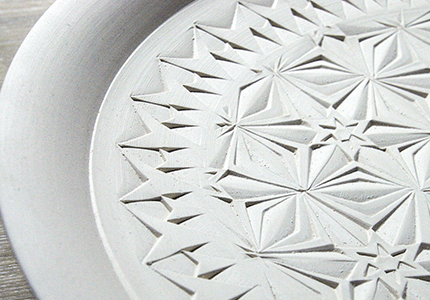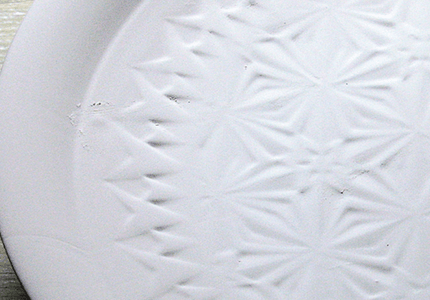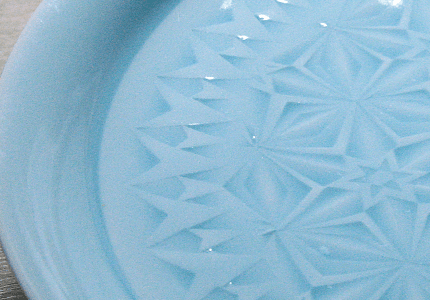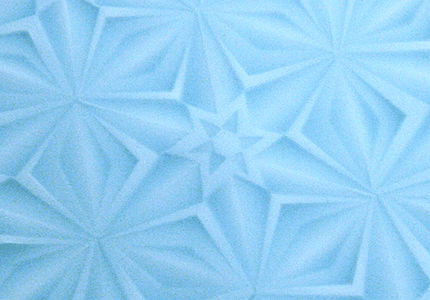Back
PALE BLUE PORCELAIN

Description
Pale-blue celadon porcelain (seihakuji, known as qingbai in Chinese) is made from porcelain clay derived from white stone. The porcelain is bisque fired and then covered with a glaze containing minute amounts of iron, which turns a blue tint when fired. pale blue porcelain originated in China. White porcelain made with a glaze that turns transparent when fired is called hakuji (“white porcelain”), while pieces made from porcelain clay containing iron and coated in a glaze that turns a bluish-green when fired is called seiji (“celadon” or “green ware”).
When patterns or designs are incised on the clay body of the piece, the celadon glaze collects in the recessions during firing, creating a beautiful effect reminiscent of pooled water. The glaze for pale-blue porcelain celadon must be applied thickly, which strains the porcelain and can cause it to crack during firing, making it difficult to produce.
Process
-
 1.Designs are incised into the piece and it is bisque fired.
1.Designs are incised into the piece and it is bisque fired. -
 2.Glaze is applied thickly so that the design is covered entirely.
2.Glaze is applied thickly so that the design is covered entirely. -
 3.The piece is fired until it takes on a blueish tint and is complete.
3.The piece is fired until it takes on a blueish tint and is complete. -
 4.The blue is especially apparent in the details of the design.
4.The blue is especially apparent in the details of the design.
-
Reference: Nihon Kōgeikai Higashi Nihon Shibu (Japan Kōgei Association Eastern Branch), ed., Dentō kōgei-tte nani? – miru, shiru, tanoshimu gaido bukku (What Are Traditional Crafts? –A Guidebook to Seeing, Learning, and Enjoying). Unsodo, 2013.
